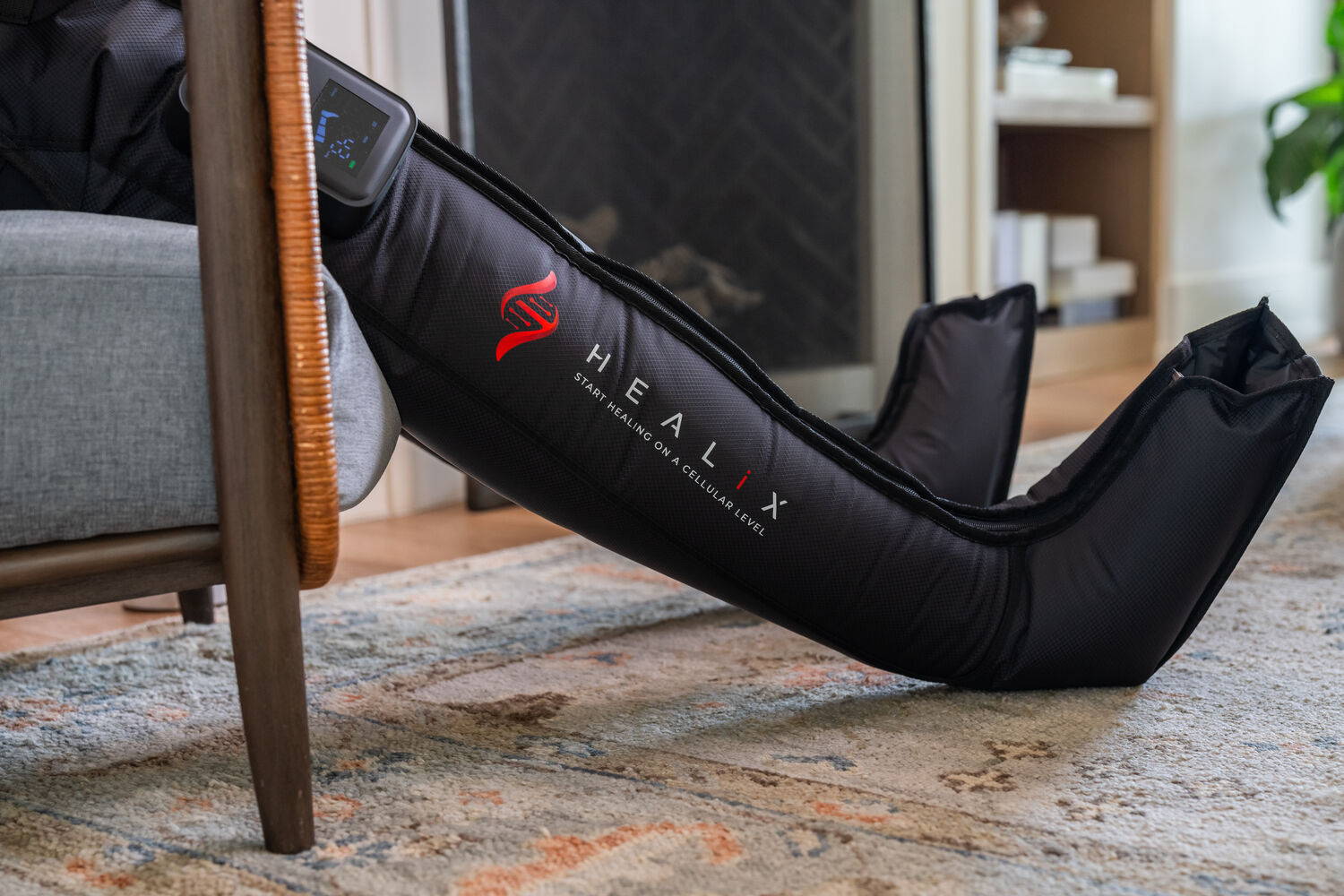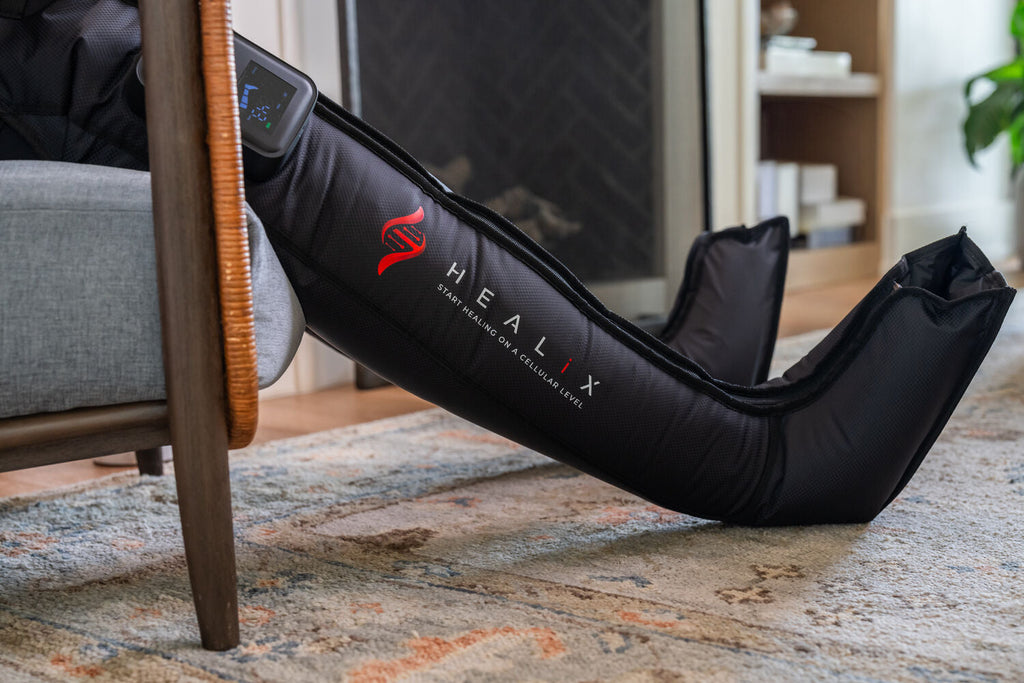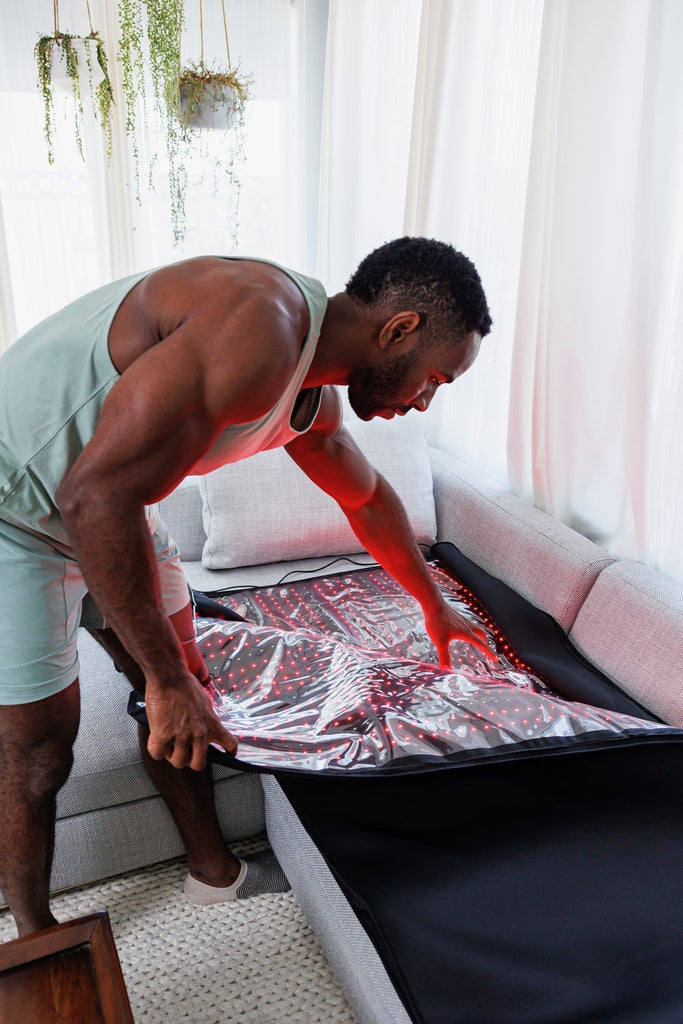What Are Intermittent Pneumatic Compression Boots? Benefits for Circulation, Pain Relief & Recovery
What Are Intermittent Pneumatic Compression Boots? Benefits for Circulation, Pain Relief & Recovery

October 29th, 2025 | Health
Most people notice legs that feel heavy, tight, or sore after a long day. For some, it happens after a workout. For others, it’s from sitting still for hours. Either way, it points to one thing: your circulation isn’t keeping up.
Good blood flow and proper fluid movement are what keep your legs feeling light and your muscles fresh. When that slows, recovery becomes harder, and pain starts to build.
This is where a method called intermittent pneumatic compression comes in. It’s not new or experimental. Hospitals, sports centers, and rehab clinics have been using pneumatic compression boots for years to help improve blood flow, ease pain, and speed up recovery.
Let’s understand what it actually is and how it helps.

What Is Intermittent Pneumatic Compression (IPC)?
Intermittent Pneumatic Compression, often called IPC, is a simple therapy that helps your body keep blood and fluid moving properly. It uses air-filled sleeves or pneumatic compression boots that gently squeeze and release around your legs in a repeated cycle. Each compression wave helps push blood and lymph fluid upward toward the heart, just like your muscles do when you walk or move.
This action supports two vital systems in your body:
● Blood circulation, which supplies oxygen and nutrients to the muscles.
● Lymphatic drainage, which clears waste and reduces swelling or fluid buildup.
By keeping both systems active, IPC therapy helps maintain healthy legs, faster recovery, and less fatigue. Many hospitals and rehabilitation centers use intermittent pneumatic compression as part of post-surgery care or DVT prevention.
Clinical studies back this up. A meta-analysis published in Circulation (2013) found that IPC therapy effectively reduced the risk of venous thromboembolism and improved overall blood flow improvement in patients recovering from surgery or limited mobility. This research helped establish IPC as a trusted method for supporting healthy circulation.¹
In simple terms, pneumatic compression boots help your body do what movement naturally does, boost flow, clear fluid, and reduce pressure buildup in the legs.
How IPC Boots Work
Think of intermittent pneumatic compression as an external helper for your body’s natural pumping action. When you walk or move, your muscles squeeze the veins in your legs, helping blood travel back toward the heart. But when you sit for too long or finish a tough workout, that process slows down. Pneumatic compression boots can help to boost that ability and pick up the slack.
Here’s what happens during a typical IPC session:
● You wear cuffs or sleeves around your legs.
● These cuffs are connected to a small control unit that fills them with air.
● The air pressure builds up in gentle waves, starting from your feet and moving upward.
● After a few seconds, the pressure releases, and the cycle repeats.
Each inflation pushes blood through the veins, while the release allows fresh, oxygen-rich blood to return. This rhythmic motion supports blood flow improvement and activates lymphatic drainage, clearing out fluid that can cause swelling or stiffness.
The pressure used is mild and controlled. It doesn’t restrict movement or feel painful. Instead, it gives a firm but comfortable squeeze that mimics how your muscles would contract naturally.
With regular use, this simple process helps reduce fluid buildup, relieve tension in the legs, and support faster recovery for athletes and anyone who spends long hours on their feet. It’s a safe, non-invasive way to keep circulation active and prevent problems linked to poor blood flow.
Proven Benefits of Intermittent Pneumatic Compression
The biggest reason people turn to intermittent pneumatic compression is simple: it works. Improving circulation and clearing fluid buildup, it helps your body recover faster, feel lighter, and stay pain-free. The benefits go beyond recovery; they touch comfort, mobility, and daily energy levels.
1. Blood Flow Improvement
When blood circulation slows, muscles start to ache and feel heavy. Pneumatic compression boots help move blood upward from the feet to the heart, keeping the veins active even during rest. This steady movement supports oxygen delivery, reduces pooling, and helps prevent stiffness.
Several clinical reviews have confirmed that regular IPC use can lead to measurable blood flow improvement and better vein function.¹
2. Better Lymphatic Drainage
Healthy lymph flow is just as important as blood circulation. IPC therapy helps the lymphatic system move excess fluid out of tissues, reducing swelling and that tight, uncomfortable feeling many people get after sitting or standing too long. Improved lymphatic drainage also clears waste from the muscles, supporting natural recovery and reducing inflammation.
3. Reduced Leg Pain and Fatigue
Many users report that intermittent pneumatic compression brings noticeable relief from sore or throbbing legs. The rhythmic pressure helps relax tense muscles and ease discomfort caused by fluid buildup or poor flow. With consistent use, it can reduce daily leg pain, especially in people with circulation-related issues or those who stay on their feet all day.
4. DVT Prevention and Recovery for Athletes
Hospitals use IPC as part of DVT prevention care, while athletes rely on it for post-training recovery. The steady compression keeps blood from stagnating, lowering the chance of clot formation in inactive legs. For active individuals, the same mechanism aids recovery for athletes, easing soreness and preparing the body for the next session.² ³
Together, these IPC benefits create a strong foundation for better leg health, less pain, smoother circulation, and faster healing without medication or strain.
Who Can Benefit Most
● Older adults: Supports lymphatic drainage and helps prevent stiffness or fluid buildup.
● Office workers and drivers: Long sitting hours slow blood flow; pneumatic compression boots keep circulation active and legs comfortable.
● Athletes and fitness enthusiasts: Helps with recovery for athletes by easing soreness, reducing swelling, and improving flexibility after training.
● Nurses, retail staff, and factory workers: Standing all day can cause heavy or painful legs. IPC therapy supports blood flow improvement and reduces fatigue.
● People with limited mobility or post-surgery recovery: Used safely under guidance for DVT prevention and swelling control.
Closing Thoughts
Healthy circulation is one of those things we ignore until problems start showing up. Aching legs, swelling, or slow recovery are often signs that your blood and lymph flow need support.
Intermittent pneumatic compression is a safe and proven method to improve both. It’s simple to use and doesn’t rely on medicine or complicated treatments. Whether you’re active or spend long hours sitting, it helps your body recover naturally.
Before starting any new therapy, especially for medical conditions, it’s always wise to speak with a doctor. With the right guidance, pneumatic compression boots can become a practical part of daily wellness and long-term leg care.
References
1. Ho, K. M., & Tan, J. A. (2013). Stratified Meta-Analysis of intermittent pneumatic compression of the lower limbs to prevent venous thromboembolism in hospitalized patients. Circulation, 128(9), 1003–1020.
https://doi.org/10.1161/circulationaha.113.002690
2. Kim, N. Y., Ryu, S., & Kim, Y. (2024). Effects of intermittent pneumatic compression devices interventions to prevent deep vein thrombosis in surgical patients: A systematic review and meta-analysis of randomized controlled trials. PLoS ONE, 19(7), e0307602.
https://doi.org/10.1371/journal.pone.0307602
3. Wang, Y., Huang, D., Wang, M., & Liang, Z. (2020). Can intermittent pneumatic compression reduce the incidence of venous thrombosis in critically ill patients: A Systematic Review and Meta-Analysis. Clinical and Applied Thrombosis/Hemostasis, 26.
https://doi.org/10.1177/1076029620913942



